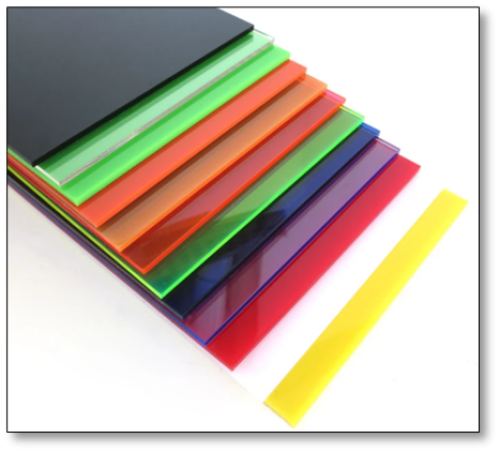LAVAL 1 800 361-0338
Lévis 1 866 835-5335
What is transparent and seen everywhere? Plexiglas
What is Plexiglas? A plastic whose chemical name is Poly (methyl methacrylate) [PMMA]. The word Plexiglas is actually a brand name used in everyday language. There are also several other brand names: Altuglas, Lucite, Chrystalite, etc.
How is Plexiglas made? Plexiglas is generally made of:
- Emulsion polymerization: monomer, emulsified in water, reacts as catalysts with the additionof peroxides. The result is a white powder ready to be molded.
- Polymerization in casting: Between two glass plates used as a mold, monomer is polymerized with the addition of a catalyst in an oven. The result gives plates from 1 mm to 200 mm thick and different lengths with excellent optical properties.
Note that polymerization is a chemical reaction that links several monomers (molecules) and tries to bind them into a long chain of molecules commonly known as plastic.



A concrete example? Everyone noticed that, since the outbreak of the COVID-19 pandemic, panels made from this type of plastic have taken over places such as offices, shops, factories and wherever the demand to prevent the spread of the virus between people is required to avoid direct contact.
What to do with Plexiglas after the pandemic? Like every beginning, there is an end. Plexiglas is no exception. This issue is a real headache for the Government of Quebec. The challenge for the Ministère de l’Environnement is significant as they must answer two important questions: how many Plexiglas panels have been used and how will they be recycled? The current option available for the Ministère de l’Environment, and which seems the most likely in the absence of recycling plants and markets, is to centralize the storage of all panels in order to think of solutions, such as their reuse in bus shelters and parks, for example. Will this option be effective enough to not harm the environment? Time will tell.
How can Plexiglas be recycled? Chemically speaking, we can proceed the opposite way, i.e., depolymerization. We would go back to the starting point by producing methyl methacrylate monomer, which will be used, in turn, for polymerization to obtain Plexiglas. In this way, we will have contributed to the search for innovative solutions for the improvement or development of products and processes, in compliance with the principles of sustainable chemistry and circular economy in order to meet the needs of the industries and societies.
What about Quebec? Unfortunately, there are currently no companies involved in the recycling of Plexiglas. The only option that remains on the Government’s table is the recovery and reuse of Plexiglas panels in other areas of application, as mentioned above.
Lesson to remember: “Think before you act.” It is all well and good to bep rotected from the pandemic, but was enough thought given to protect the environment in which we live?
By Abdelaziz Mehamha, Ph.D. - Chemistry & Metallurgy Department


